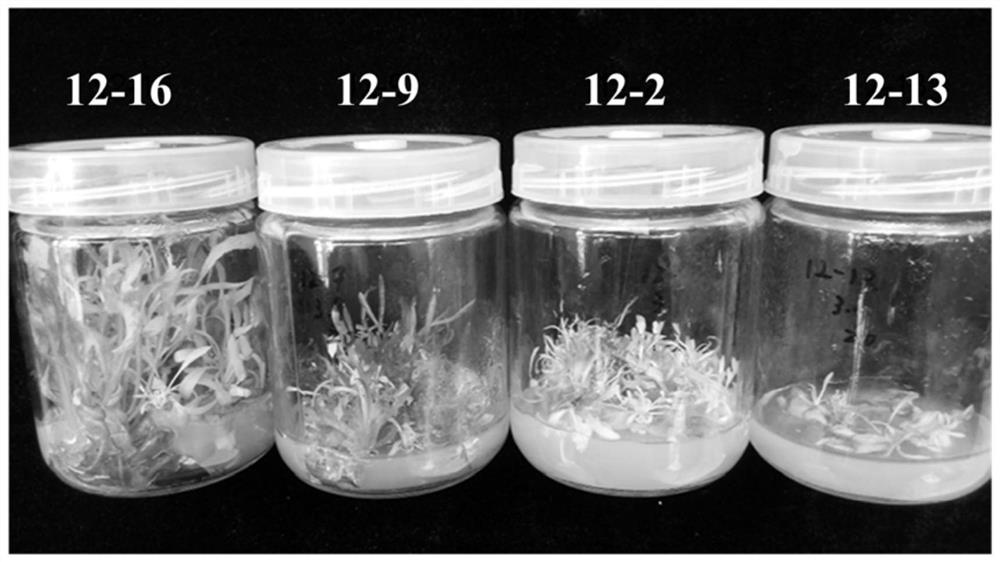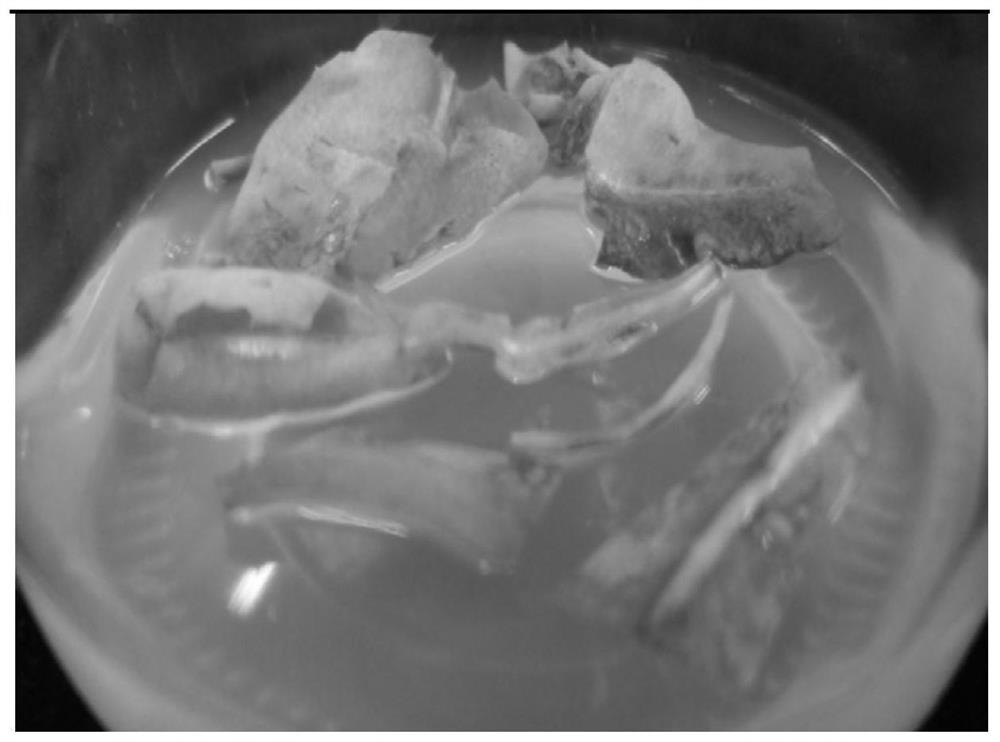A kind of genetic transformation method of rubber grass
A genetic transformation method and technology of genetic transformation, applied in biochemical equipment and methods, horticultural methods, botanical equipment and methods, etc., can solve the problem of difficulty in effectively obtaining transgenic lines of rubber grass, self-incompatible propagation characteristics, resistance to In order to improve the induction rate of resistant regenerated buds, the continuous growth activity is strong, and the genetic transformation cycle is short.
- Summary
- Abstract
- Description
- Claims
- Application Information
AI Technical Summary
Problems solved by technology
Method used
Image
Examples
Embodiment 1
[0045] Embodiment 1-a kind of rubber grass genetic transformation method comprises the steps:
[0046] (1) Screening and acquisition of plant materials for genetic transformation of rubber grass
[0047]a. Collect and select Xinjiang rubber grass germplasm, cut off the complete young leaves, after sterilization, cut the leaves into 2-3cm lengths, and scratch 1 / 2-3 / 2 of the leaves across the veins every 0.8-1.2cm 4 width, petiole cut to 1-1.5cm length, placed in the bud induction medium with formula including: MS+1.6mg / L6-BA+0.1mg / LNAA+20g / L sucrose, pH 5.8; transfer after 30 days of culture In the same new medium, continue to grow for 20-30 days; according to the regeneration rate and growth state of the regenerated buds after cultivating on the bud induction medium for 50 days, select the excellent germplasm of Xinjiang rubber grass suitable for tissue culture;
[0048] b. Cut off the selected excellent germplasm of Xinjiang rubber grass when the plant height reaches 4-6cm, ...
Embodiment 2
[0058] Embodiment 2-a method of genetic transformation of rubber grass, according to the transformation method of embodiment 1, the difference is that in step (1), the culture conditions for bud induction and rooting culture are: 22°C, and the light cycle is 16 hours / day, The light intensity is 1800-2000lux; in steps (2) and (3), the conditions for the pre-cultivation, induction of resistant buds and rooting culture are: 22°C, the light cycle is 16 hours / day, and the light intensity is 1800-2000lux.
[0059] According to the above-mentioned genetic transformation method, the germplasm germplasm of the screened rubber grass has a germplasm rate of 100%, and in the process of genetic transformation, the induction rate of resistant regeneration buds is 33.8%, and the positive detection rate of the final transgenic rubber grass is 93.4%. , Transgenic regenerated seedlings have complete plant shape, low deformity rate, fast growth, high propagation efficiency of transgenic regenerat...
Embodiment 3
[0060] Embodiment 3-a genetic transformation method of rubber grass, according to the transformation method of embodiment 1, the difference is that in step (1), the formula of the bud induction medium includes: MS+1.5mg / L6-BA+0.1mg / LNAA+20g / L sucrose, pH 5.8; the formula of the rooting medium includes: 1 / 2MS+20g / L sucrose, pH 5.8;
[0061] In step (3), the formulation of the screening medium includes: MS+1.5mg / L6-BA+0.1mg / LNAA+20g / L sucrose+400mg / L Car and 10mg / L Hyg, pH5.8; The formula of the new rooting medium includes: 1 / 2MS+20g / L sucrose+400mg / L Car and 10mg / L Hyg, pH5.8.
[0062] According to the above-mentioned genetic transformation method, the germplasm germplasm of the screened rubber grass has a germplasm rate of 100%, and in the process of genetic transformation, the induction rate of resistant regeneration buds is 35.1%, and the positive detection rate of the final transgenic rubber grass is 96%. , Transgenic regenerated seedlings have complete plant shape, low d...
PUM
 Login to View More
Login to View More Abstract
Description
Claims
Application Information
 Login to View More
Login to View More - R&D
- Intellectual Property
- Life Sciences
- Materials
- Tech Scout
- Unparalleled Data Quality
- Higher Quality Content
- 60% Fewer Hallucinations
Browse by: Latest US Patents, China's latest patents, Technical Efficacy Thesaurus, Application Domain, Technology Topic, Popular Technical Reports.
© 2025 PatSnap. All rights reserved.Legal|Privacy policy|Modern Slavery Act Transparency Statement|Sitemap|About US| Contact US: help@patsnap.com



